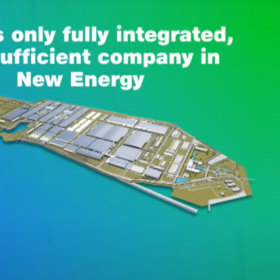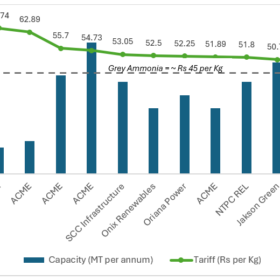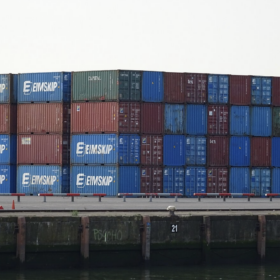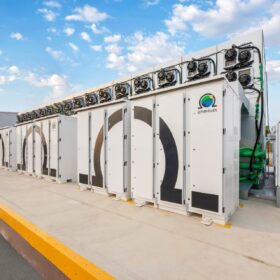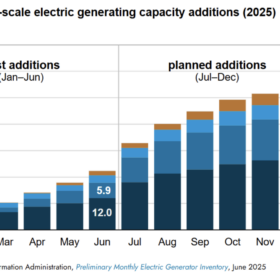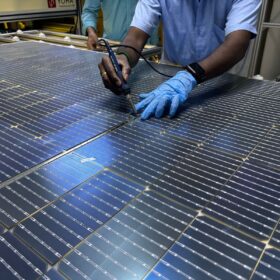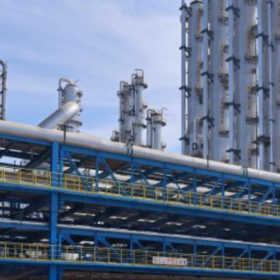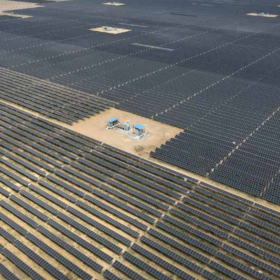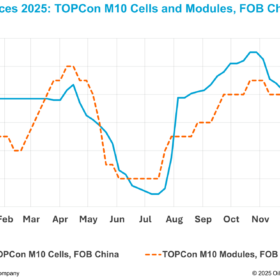Reliance Industries Ltd’s battery gigafactory set to begin operations in 2026 with an initial annual capacity of 40 GWh
Reliance Industries Limited (RIL) is set to begin production at its upcoming battery gigafactory in 2026, with an initial annual capacity of 40 GWh. The facility will later be modularly scaled up to 100 GWh per annum, announced Anant Ambani, executive director of RIL, during the company’s annual general meeting recently.
Green ammonia is only 10% costlier than grey in the latest SIGHT Mode 2A auctions
The lowest green ammonia price discovered so far in the SIGHT Mode 2A auctions is just 10.1% higher than the current grey ammonia prices in India (US$515 per MT). Notably, the low cost of Rs 49.75 per kg in the Mode 2A auctions is almost half of a similar green ammonia auction conducted by H2Global in 2024, suggesting an imminent price parity between grey and green ammonia.
US trade court orders retroactive solar duties on Southeast Asian imports
The US Court of International Trade has ruled that the Biden administration’s two-year suspension of solar duty collections was unlawful, clearing the way for retroactive tariffs on billions of dollars of solar gear from Southeast Asia.
India’s solar EPC evolution: Why boutique firms are attracting institutional capital
Boutique EPC companies prioritize efficiency, customization, and site-specific solutions, and they frequently outperform their larger counterparts in terms of cost-performance ratios.
Ohmium unveils new electrolyzer system with compact horizontal footprint of 29.7 m²/MW
Ohmium’s Lotus Mark 3 electrolyzer system with a compact land usage area of just 29.7 m2 per MW, including space for maintenance and access, sets new industry standard for land usage efficiency.
“We are in the process of establishing a sodium-ion battery cell pilot line by 2026″: Macsen Labs CEO
Achal Agrawal, CEO of Macsen Labs, a chemical company making bold strides into battery materials, speaks to pv magazine about the potential of sodium-ion batteries for energy storage, their journey developing Prussian White cathodes, and plans to scale this technology.
EIA projects record 64 GW US power capacity buildout in 2025
The US Energy Information Administration (EIA) says developers plan to add 21 GW of solar in the second half of 2025 alone.
ALCM implementation to hamper execution of 20-25 GW of green open access projects
Following the implementation of Approved List of Cells and Manufacturers (ALCM), the expected shortage of DCR modules is likely to hamper the execution of nearly 20–25 GW of green open access projects over the next 2-3 years. Concurrently, the high prices of DCR modules will also increase the project power tariff by up to INR 0.4 – 0.5 per unit.
GameChange BOS opens high-volume transformer factory in Maharashtra
The factory, spread across 180,000 sq. ft., is capable of producing over 1,800 transformers annually, significantly expanding the company’s ability to serve key markets in India, Europe, and the United States.
Shrinking export opportunities raise solar module oversupply concerns in India: SBICAPS
India’s solar module manufacturing capacity has reached around 100 GW, enough to meet domestic demand. However, with total module capacity rising to 190 GW by March 2027 and export opportunities narrowing, the market faces oversupply crisis, states a new report by SBICAPS.
